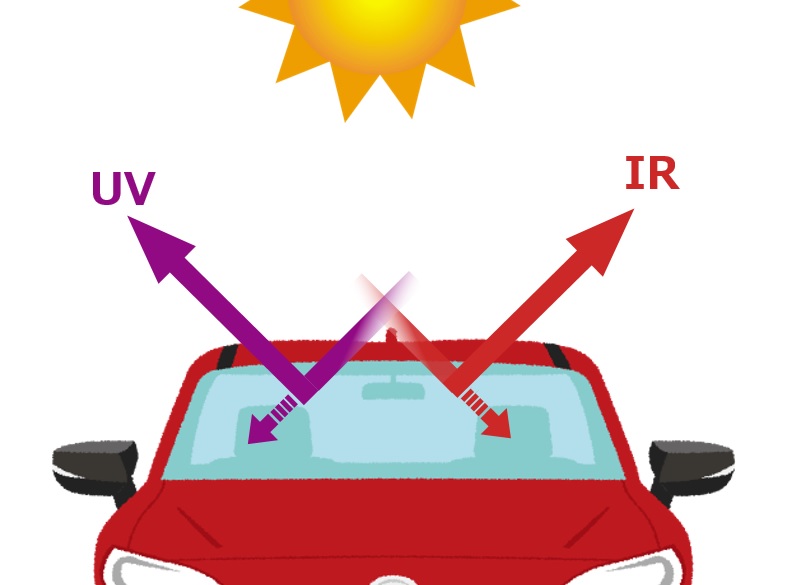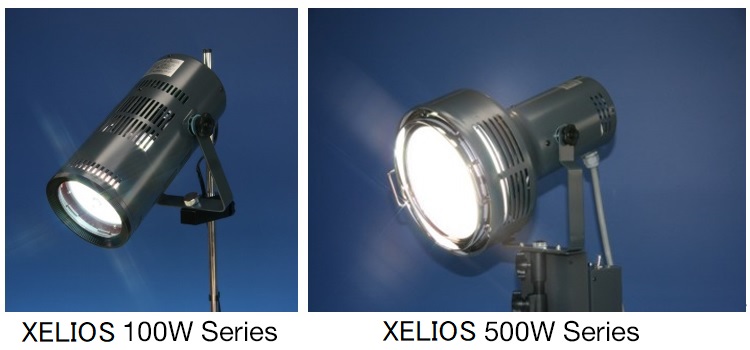In our track record of delivering artificial solar lighting, in addition to the heat-blocking products previously introduced as global warming countermeasures (heat-blocking paint, heat-blocking pavement), we also have heat-blocking glass and films. The crucial difference between heat-blocking paint or pavement and heat-blocking glass or film is that the latter blocks infrared rays but allows visible light to pass through. In other words, it is “transparent.”

In the case of glass, since it is incorporated into automobiles and buildings, it cannot be easily replaced. Replacement requires specialist work. However, since ordinary individuals can apply the film to glass themselves, it is sold in a price range that makes it easy to purchase. Because the prices are low, performance may be lacking or the published data may be insufficient, so there is a wide variety. Heat-blocking films also offer functions other than heat blocking, such as preventing glass from shattering when broken and blocking ultraviolet rays.
In addition to blocking heat, heat-blocking glass and films also have thermal insulation effects. By preventing indoor heat from escaping and improving the effectiveness of heating, they also help reduce energy consumption in this respect. Heat flows from areas of higher temperature to areas of lower temperature. In winter, when the temperature inside is higher than outside, the insulation works in the reverse direction from the way it does in summer, when the temperature outside is higher than inside, so heat-blocking glass and films are effective in both directions.
EF-filtered artificial solar lighting is used to evaluate the performance of heat-blocking products in terms of how much heat they can block. The evaluation method for heat-blocking glass and films involves fixing both the artificial solar lighting and the target object in place, and then irradiating the target. Heat-blocking glass or film is placed between the artificial solar lighting and the target, and the change in the target’s temperature rise is measured.
If you only need to measure the amount of change in the target’s temperature rise, the standard artificial solar lighting 100W Series XG-100E/EF or 500W Series XG-500E/EF is optimal. This method can be used to measure the degree of heat blocking.
The super spotlight type XG-100EFSS or XG-500EFSS can be used if you want to irradiate the target with an intensity equivalent to direct sunlight for more accurate measurements.
In summary, the standard type is recommended for simple evaluations, while the super spotlight type is recommended for more accurate measurements.

If you only want to observe the change in temperature increase, a halogen lamp may be sufficient. However, if you want customers to trust the accuracy and reliability of the data, the precision of the tests must be improved. With artificial solar lighting, the data is reliable, and because changes over time are extremely small, one of its major features is the ability to repeatedly conduct tests with high precision.
In addition to being used by user companies during their own product development, artificial solar lighting is also used by manufacturers who want to showcase their products to customers at exhibitions and product briefings for product demonstrations.
Please refer to the following pages for the specifications and performance of artificial solar lighting.
If you are considering evaluating the performance of heat-blocking glass or films in a stable environment, please feel free to contact our experienced team. We will propose equipment that meets your requirements.
・ Artificial Solar Lighting XELIOS-500W Series
・ Artificial Solar Lighting XELIOS-100W Series
・ Artificial concentrating-type solar lighting (super spotlight type) capable of producing 1 sun (1,000 W/m2) or 100,000 Lx
・ Reasons why XELIOS artificial solar lighting is used for performance testing of heat-blocking pavement
・ Reasons why XELIOS artificial solar lighting is used for performance evaluation of heat-blocking paints